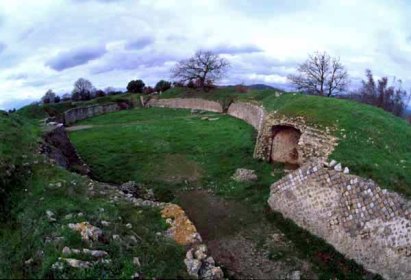Among all the grand roads that the ancient Romans built, the Via Clodia is perhaps the least important historically. However, it was still very functional for its mid-range length and a valid alternative to the more famous routes, which are often much longer and used for different reasons. The name, or rather the nickname, given to the Via Clodia was the “Thermal way” because it connected several natural spas, and according to some researchers, it ended in the famous city of Saturnia, one of the most important natural spas in central Italy, which is a very high traffic tourist area today.

Via Clodia’s Historical Background
The genuine name that has been given to this road since its construction is a little more interesting. It is assumed that it stems from the name of a magistrate – whose name is unknown – who oversaw the restoration of existing roads near the end of the third century BC.
Evidence shows that the Romans built the Via Clodia on an existing Etrurian road, but the first historical documents mentioning it doesn’t appear until the latter part of the third century BC. It has also been proven that the Via Clodia was entirely paved by 225 BC, which is important because it gives some idea of how advanced the ancient Romans were in terms of construction. They were very careful and precise in every aspect of their work, which is why much of their architectural efforts still stand today.
 You can see the Via Clodia, in purple. Ph. CC EH101 on wikimedia
You can see the Via Clodia, in purple. Ph. CC EH101 on wikimedia
The position, like all of Rome’s streets, was crucial
The exact location of the Via Clodia is between two major consular roads, the Via Cassia and the Via Aurelia. There is, however, a major difference between the Via Clodia and these others, primarily in the way they were used. The Via Cassia and Via Aurelia were long-range roads intended to move an army rapidly through Italy in order to defend it or to send troops to new colonies or battlefields outside Italy. Via Clodia, however, was a commercial route and was designed specifically to respond to the trade needs of the Etruria colonies. The relations between the Romans and the Etrurians are still a big mystery, but clearly, there was some interaction between the two which bridged the transition between the dusk of the Etrurians and the dawn of the Roman Empire.
It has not been proven definitively, but it is likely that the ancient Romans actually used the route that the Via Clodia was built to colonize the Etrurian region before constructing the Via Clodia itself. So, the only reasons to justify an investment of resources and manpower to a project as small as the Via Clodia were the trade necessities that this particular area required after being pacified.
Below are some photographs that depict the historic Via Clodia.



The Via Clodia route
We have previously explained in broad strokes the original course of the route, but history teaches us that there are some distinguishing features to consider while discussing the Via Clodia.
For example, I cannot forget the station La Storta, where you might find stalls for the empire’s horses. Walking in this direction, you may reach the settlement of Galera even centuries after Christ. It is now a lovely ruin, as the outbreak of malaria killed all the residents in 1809, and it was never repopulated.
The Via Clodia then continues along Lake Bracciano until we reach the Baths of Vicarello (Bagni di Vicarello), which were once highly popular.
Many of the cities that grew up along the route have now been demolished or forgotten. Continue north until you reach modern-day Tuscany…
The Via Clodia connects the contemporary cities of Saturnia, Manciano, and Montemerano.

To conclude, it is important to see the Via Clodia as a perfect example of the importance that the ancient Romans placed upon macro and micro transportation, realizing that it was a key element in connecting and maintaining the Empire. Roads like the Via Clodia assured efficient commercial traffic, the expedient exchange of goods and ideas, and the smooth flow of people freely and comfortably between the city and the greater regions of the Roman Empire, thus establishing the strong foundation upon which the modern world as we know it is founded.













